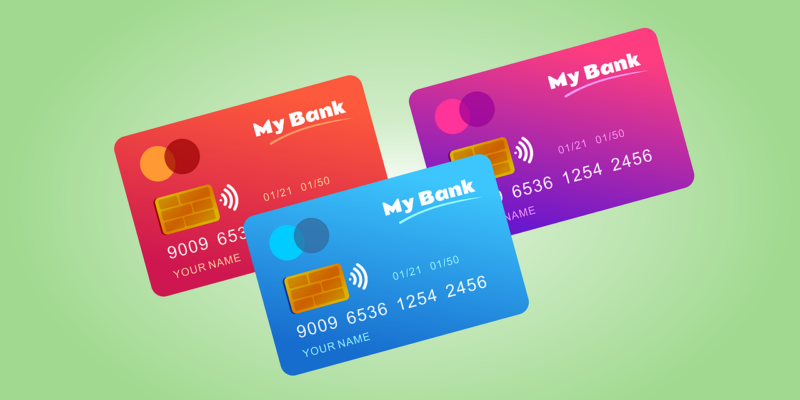Did you know the IPTV market is set to hit $104 billion by 2023? This…

Understand Your BIN Number: A Quick Guide
Did you know that credit card fraud detection rates went up by 30% when banks used BIN search tools? Just six to eight digits, the Bank Identification Number (BIN), has a big impact on secure transactions and payment processing.
Knowing your BIN number is key for anyone dealing with cards, from merchants to consumers. This small number at the card’s start shows who issued it. It also helps spot lost or stolen cards, preventing identity theft. With the financial world changing fast, using a BIN checker can prevent many transaction problems.
For fintech startups, BIN numbers make joining big names like Mastercard or Visa easier. They help with smoother integration and managing card services. This guide will show you all about BIN numbers and how they secure and make transactions smoother.
BIN Number Key Takeaways
- BIN numbers significantly enhance fraud detection, improving by up to 30%.
- These initial digits disclose your card’s issuing financial institution.
- A BIN search can help in quick identification of lost or stolen cards.
- Understanding your bank identification number is crucial for preventing identity theft.
- Fintech startups benefit from BIN sponsorship for smoother integration with card schemes like Mastercard.
- Using a BIN checker can save you from transactional issues and enhance customer experience.
What is a BIN Number?
A BIN number, also known as the Bank Identification Number, is a key financial identifier for payment cards. It’s the first six to eight digits on a card. These digits are crucial for banks and merchants to process transactions smoothly.
Definition and Importance
Bank Identification Numbers help identify the card issuer quickly and accurately. They are a key part of payment systems. This ensures every transaction can be traced back to its source.
For financial institutions, the BIN database is a vital tool. It helps verify card authenticity, conduct bin validation, and improve security against fraud.
The History of BIN Numbers
The idea of BIN numbers started to make payment processing easier. At first, there were fewer digits, but as more institutions started issuing cards, more digits were needed. This shows how BIN numbers have evolved to meet financial demands while keeping standards strong.
Transition from Six to Eight Digits
With more financial institutions, the need for more BIN sequences grew. So, the ISO made a rule to use eight-digit BINs starting in April 2022. This change helps with the growing number of financial institutions.
It also makes bin lookup systems better and protects against BIN attacks. This update keeps data protection standards like PCI-DSS in check.
How Bank Identification Numbers Work
Understanding bank identification numbers (BINs) is key in the world of payments. Each BIN, also called an Issuer Identification Number (IIN), has specific parts. These parts have different roles.
The Major Industry Identifier (MII)
The first digit of a BIN is the Major Industry Identifier (MII). It tells us what kind of institution issued the card. For instance, a ‘4’ at the start means it’s a Visa financial institution. A ‘3’ at the start usually means it’s from American Express, linked to travel and entertainment.
The Issuer Identification Number (IIN)
The next five digits are the Issuer Identification Number (IIN). They pinpoint the bank or issuer within the industry. This setup makes checking cards during transactions quicker. With a BIN list, businesses can verify and confirm the issuer easily.
Detailed Breakdown of a BIN
A BIN or IIN can be six or more digits long. It holds vital information. Tools like a BIN generator can decode the MII and IIN. This reveals the card type, brand, and issuing bank. For example, ‘412345’ might mean a Visa card from Chase Bank.
Key Information Encoded in BIN Numbers
BIN numbers are full of important data. They tell us about the card brand, its level, and where it was issued. They also show if the transaction is local or international. This helps merchants check customer identities fast, process payments well, and keep transactions secure. It reduces the risk of identity theft and fraud.
Practical Uses and Benefits of BIN Numbers
The bank identification number (BIN) plays a key role in electronic transactions. It helps prevent fraud, makes payments more efficient, and improves the customer experience. These roles are crucial.
Fraud Prevention
One major benefit of BIN numbers is preventing fraud. They check the cardholder’s address and the bank that issued the card. This confirms transactions are real.
The BIN system also fights digital fraud with dynamic BINs and AI security. This makes transactions safer from fraud.
Efficiency in Payment Processing
Another big plus of BIN numbers is making payments more efficient. Merchants use BIN info for various payment methods and to verify customers faster. This leads to smoother transactions and fewer errors.
Enhancing Customer Experience
BIN numbers do more than prevent fraud and speed up payments. They also make the customer experience better. By looking at BIN data, merchants can understand what customers like. This lets them offer special deals and services that match what customers want.
Conclusion
In this guide, you’ve learned a lot about BIN numbers and their importance. You now know how they play a key role in managing money and keeping transactions safe. This knowledge comes from understanding the history and growth of the Bank Identification Number.
Learning about BIN numbers shows how they help prevent fraud and make customer experiences better. They are like a secret code in your financial dealings. This knowledge helps you feel more confident when using digital payments.
As technology gets better, BIN numbers will keep changing and doing more. They are crucial for safe online shopping. They make sure your money transactions are easy and secure in the future.



Comments (0)